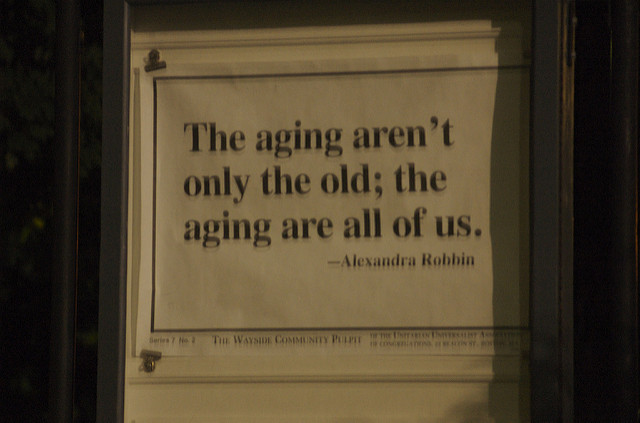|
|
|
Archive for the 'Retention' Category
Monday, March 11th, 2019

Poking through 11+ years of posts I find information that’s as useful now as when it was written.
Golden Oldies is a collection of the most relevant and timeless posts during that time.
Engagement is way down, jobs are plentiful, turnover is way up, and managers aren’t just searching for solutions.
No, what they really want to find is a silver bullet; a Harry Potter magic wand they can wave to promote engagement, hike productivity, juice creativity and sustain the whole thing.
But as we all know, silver bullets and magic wands are in extremely short supply.
That said, VSI, as explained below, comes pretty close.
Read other Golden Oldies here.
How do you lead/influence/motivate/get/force others to move in the direction you choose or achieve a goal, large or small, that you set? That question is the basis for yards of books and megabytes of content, but in spite of all that’s already been written I thought I’d add my bit to the total.
After all, responding to this question is almost a right of passage in the land of leadership and motivation.
So here’s my two-word answer: vested self-interest (VSI).
Over the years, I’ve found vested self-interest to be not only the most powerful people motivator around, but also one of the least expensive, since the cost is mainly from the effort to learn what it is for each person.
And the idea must have merit when you consider that a Sudanese cell phone billionaire is using it to incentivize African heads of state to act responsibly.
In that case, the incentive was money, but that’s not always the case. If it were, then companies wouldn’t lose talent to other companies offering the same or even lower pay.
It’s an error to always assume that dollars will do it, or that what turns on one, turns on all. Hot buttons are as individual as your people are and don’t always involve tangibles.
As a manager, it’s up to you to discover each of your people’s hot buttons, i.e., what really turns them on, and then find a way to satisfy it in return for what you want in performance, innovation, etc.
Taking the time to learn what the buttons are allows you to power your team as never before, which, in turn, should give you the ability to satisfy your own VSI.
Remembering that generalities are always dangerous, here are some of the most common hot buttons
-
- public recognition – not just for big things, but for the small, everyday wins that fill most people’s working lives;
- strokes – a few words here, a compliment there, doesn’t take much time, but be warned, people aren’t stupid, if your comments are lip-service only they will know and respond accordingly;
- giving back – supported or encouraged volunteer programs, leave day banks, etc.;
- making a difference – internally and/or externally; and
- growing/stretching – the opportunity to do something new, learn new skills, etc.
Obviously, money is still a motivator, but it’s not always big bucks, it’s more that the amount is relevant to the accomplishment and logical relative to the company’s circumstances.
And it doesn’t need to be “new” money, it can be a different way to cut a current pie. For example, I get many queries from senior execs asking for exotic approaches and detailed how-to’s for implementing cultural and other intangible changes that often require encouraging (and at times, coercing) their managerial staff into actually doing them.
The most successful method I’ve found is as simple as one, two, three.
-
- Carefully define, in a quantifiable manner, what you want done (not “increase retention,” but “reduce turnover X% by [date]”).
- Include these well-quantified goals in the managers’ annual objectives. (This is not a variation of MBO.)
- Make it clear to your managers that they will be evaluated on these goals and that the evaluation will impact their annual reviews and compensation.
Vested self-interest should do the rest
And as any parent can tell you, VSI works great on kids, too — or anyone, for that matter.
Image credit: Quotes Everlasting
Posted in Culture, Golden Oldies, Motivation, Retention | 1 Comment »
Tuesday, March 5th, 2019

(‘Jerk’ is used here as an umbrella term for bullies, manipulators, bigots, rotten attitudes, rudeness, cruelty, etc.)
Jerks have been around since the dawn of man.
In today’s workplace you can find jerks at any level of an organization.
It’s always been difficult to call out the jerks, because they are usually bullies and good at intimidation.
The rise of individual jerks, some of them extremely powerful, has fostered the rise of institutional jerks, also very powerful.
Some are in tech and run for companies that are household names — Facebook, Google, Amazon — others aren’t as well-known, such as Palantir.
However, you can find them everywhere, in politics — national, regional and local. In religion — any of them. And any other arena you want to focus on.
Their power is more far-reaching and they believe they are untouchable.
Sadly, they often are.
But how much worse is it when the institution itself is the jerk?
Talk about untouchable.
WeWork is on a role to lead the newest crop of institutional jerks.
The company acquired and plans to monetize software that tracks employees throughout a company.
Euclid’s website says the company is “focused on redefining the workplace experience of the future.” Translation: optimizing every aspect of the physical workplace so workers are their most productive.
Euclid does this by tracking how people move around physical spaces. Its technology can track how many people showed up to a meeting or to that after-work happy hour. The company can see where employees tend to congregate and for how long. It’s all done over Wi-Fi.
Sound creepy?
It is.
Governments are getting into the act, too.
While the legislation varies slightly from state to state, it generally requires contractors to install software that allows “automatic verification” of their hours billed. Some bills, such as those being considered in New Jersey, Pennsylvania and Rhode Island, are as exact as requiring a software solution that takes screenshots of “state-funded activity at least once every three (3) minutes” and store that data for seven years. The New Jersey and Pennsylvania proposals also require logging “keystroke and mouse event frequency.”
Now comes the question that the jerks never seem to think about.
How do you recruit talent, let alone top talent, into an environment that says up front, “we don’t trust you”?
As for the private sector, there is no way that any kind of monitoring or surveillance will remain secret — any more than salaries did.
Companies that choose not to go down that road will enjoy a more productive, creative and loyal workforce, not to mention one heck of a recruiting edge.
Image credit: Steve Baker
Posted in Culture, Ducks In A Row, Hiring, Motivation, Retention | No Comments »
Monday, February 25th, 2019
 Poking through 12+ years of posts I find information that’s as useful now as when it was written. Poking through 12+ years of posts I find information that’s as useful now as when it was written.
Golden Oldies is a collection of the most relevant and timeless posts during that time.
Ryan’s post a couple of weeks ago reminded me of something I’ve wrote a long time ago.
The sum of it was not that great but in the moment it was contentious. Emails and gnashing of teeth on both sides. In that moment I was angry, but I chose to wait to respond.
My solution? Sleep.
Good solution, but when you’re a boss and something happens that makes you angry you usually can’t wait until the next day to deal with it.
So what do you do? Here’s a solution from the 1970s (and before). It worked then, it works now and it will work in the future.
Read other Golden Oldies here.
How angry do you become when you ask your team or colleague for X and get X — 4, or X + 1. or even Y? How often have you lost, or almost lost it, because of the response you received during a meeting?
What is the only perfect response you can make when something happens and you’re ready to blow your top?
You’ve heard the answer all your life—when you’re angry, shut up/stay quiet/ don’t say anything; don’t “look” anything, either, until you’ve calmed down. Smart advice, but hard to follow.
Many managers don’t even realize when they go into “screaming mode,” because they don’t actually scream—they drip sarcasm, leak contempt, stream scorn or fire off zingers; they belittle and role their eyes. Most don’t realize the long-term damage that they do to their people; others just don’t care—their attitude is that stuff happens, get over it!
What neither type seems to realize is that, over time, one of three things happen,
- people grow inured to their tantrums,
- are damaged by them (people do stay in abusive relationships),
- or leave the company.
To change this,
- you must first acknowledge to yourself that you do it and that you want to change it; then
- whenever you feel yourself getting angry smile, nod and leave by saying that you have to make a call, use the bathroom, whatever innocuous excuse best fits the situation;
- go somewhere private, blow off steam if necessary, but calm down;
- schedule a time to resume the discussion; then
- simulate the least amount of anger (if any) needed to get your point across.
It’ll take people time to trust the “new” you, but it’s worth it. In the office, it will pay off in higher productivity and less turnover. You and your people will suffer less from stress, and you, personally, will have more energy, enjoy higher quality sleep, and see improvement in all your relationships
Image credit: istolethetv
Posted in Communication, Culture, Golden Oldies, Motivation, Retention | No Comments »
Monday, February 18th, 2019

Poking through 12+ years of posts I find information that’s as useful now as when it was written.
Golden Oldies is a collection of the most relevant and timeless posts during that time.
You might think that stuff would change in 11 years and you would be correct if you were talking about technology, food, or similar topics. But when the subject is people, not so much.
Accents can be just as much a challenge today as they were when I wrote this and before. The difference 11 years have made is that while there is greater acceptance of diverse accents the need for understanding them hasn’t changed.
Nor has the solution described in this post. If anything, its importance has significantly increased.
Read other Golden Oldies here.
The ability to communicate successfully, in both directions, is the mark of a great manager, as is building and managing a powerful and innovative organization.
Accomplishing this mandates a willingness to hire the best available people.
But what do you do when the best can’t be easily understood?
Accents, whether from overseas or US regional, are a major turnoff to many people. Reactions range from idiotic assumptions of incompetence (essentially subconscious prejudice) to annoyance for having to exert effort listening (sheer laziness).
In a diverse world of shrinking talent pools, where English is a second language for many, it’s bad business to pass on those candidates, but it’s also ridiculous to believe that the problem will fix itself or just fade away if you ignore it.
I’m not talking about the need for flawless English, but about recognizing what happens if they aren’t understood.
What can you, as a manager, do?
If the challenge is accent (whether from India, China, New York, Liverpool, Mississippi, etc.), rather than comprehension or language knowledge, that could minimize their contribution or effectiveness, what do you do?
The same solution you use for any good candidate who is lacking a particular skill, you offer training. In this case, accent reduction training.
Again, not to force them to sound like you, but to improve their speech enough to ensure a reasonable level of understanding.
Yes, the discussion and offer needs to be handled with sensitivity, but people aren’t stupid and they know the things that put them at a disadvantage in the workplace. What you are offering to do is pay for training that will give them a boost throughout their career, not just at your company.
The cost isn’t that great, either, the company profiled in the article charges around $1000 per person. In comparison to the cost-per-day of continuing the search, $1000 doesn’t even qualify as a peanut.
Plus, there is additional ROI to you, individually, and to your company.
- You acquire top talent with a high degree of loyalty, while building a reputation as a creative manager, who knows how to successfully staff outside the box, is willing to invest in people, and has the vision to see beyond the obvious.
- Your company strengthens its diversity, which typically improves innovation, while your management achievements have an external halo effect on the company.
Image credit: 마 법사
Posted in Communication, Culture, Hiring, Motivation, Retention | No Comments »
Wednesday, February 6th, 2019

One of the major reasons people ghost isn’t rocket science.
Nor is the major cause.
Candidates ghost because nothing connected — not the company, culture, job, people, and especially not the hiring manager.
Employees ghost because they aren’t engaged.
They feel that nobody — boss, company, colleagues — gives a damn so why should they.
And in many cases they are correct.
Companies don’t walk their cultural talk, low morale is obvious, as is a “me before thee” attitude, and
for a variety of reasons, bosses treat people as replaceable — even when they know it won’t be easy or could take months.
It’s nothing new.
Since the day people became hires, instead of slaves or indentured, bosses have used and abused them.
They still do, but on a more refined level.
Skipped promotions, demotions with little-to-no explanation, seriously brutal layoffs by email, with no warning (as Elon Musk just did), which is especially destructive to people when the company/job has been cast as some kind of “higher calling,” as is common in the tech world.
Candidates often fare no better.
Many managers consider hiring a necessary evil — resumes bore them, they hate wasting time interviewing — and they have more important things to do.
Strangely enough, HR often acts the same way, with preliminary interviews conducted by interviewers who look for word matches between resumes/candidates and job descriptions.
Obviously, it’s not all companies or all bosses — but likely the ones that get ghosted.
Image credit: Joe Le Merou
Posted in Communication, Culture, Hiring, Motivation, Retention | No Comments »
Monday, February 4th, 2019

Poking through 12+ years of posts I find information that’s as useful now as when it was written.
Golden Oldies is a collection of the most relevant and timeless posts during that time.
I read an interesting article from Wharton on the current trend of ghosting by both candidates and employees (more on that later in the week). Today’s Oldies are kind of the yin and yang of finding and keeping people who aren’t likely to ghost.
Read other Golden Oldies here.
Talent in good times and bad (2008)
The people market is tightening (again), and the pundits are arguing (again) over whether there actually is a shortage of qualified people to fill openings across industries, especially high tech.
Is there really a shortage? Does it matter?
If there is a perceived shortage (i.e., jobs aren’t being filled), then companies will continue to fret over finding qualified people and managers will continue to worry that a lack of talent will damage their own careers.
During the most recent downturn there was an abundance of talent available as has happened in the past; for example
- The early nineties, when a typical ad for a software engineer in Silicon Valley drew 100-plus viable responses.
- Post-October 1987, when a financial services ad would easily draw five hundred qualified responses.
- The early seventies, when an ad for a microwave designer ran in the Sunday San Jose Mercury and over three hundred qualified engineers started lining up at 6 AM Monday morning to wait for the company’s doors to open.
It is neither the surplus of talent in a down market, nor the dearth of it in a tight market, that creates a staffing problem. Rather it is the attitude of many managers that if the person is not already working there must be something wrong.
In the Eighties the thought was “There must be something wrong; companies only lay off their deadwood.” In the late Nineties, it was, “There must be something wrong or this candidate would already have a job.”
Frequently the source of such attitudes is managers’ lack of confidence in the ability to make good hiring decisions. By hiring currently employed people, managers unconsciously can validate a positive hiring decision (must be good or she wouldn’t be there) or excuse a hiring mistake (assumed he was good because he was at XYZ).
Why the prevalence of this rarely-discussed-almost-never-admitted lack of hiring confidence? Why is staffing, with all its associated pieces, one of the most disliked of all management tasks?
Simply stated, most people don’t like doing things when they don’t feel competent and it is difficult to feel competent doing an intricate task for which you’ve had little-to-no training.
Staffing involves many tasks
- developing detailed reqs,
- screening resumes,
- doing substantial, time-saving phone interviews,
- creating and mentoring an interviewing team,
- interviewing,
- crafting an offer,
- closing and landing the candidate,
- avoiding post-acceptance pitfalls, and
- a myriad of other details.
Above all is the need to hire correctly; in other words, to hire the right person at the right time for the right reasons. To do it well requires sophisticated, proactive, real world-based training geared specifically to line managers.
Instead, much of the available training is geared to having an HR department or using an outside recruiter; is too mechanical; or is comprised of general psychology information.
When there is an abundance of highly qualified candidates it’s a result of the economy, not of a surplus of people.
Population demographics, baby bust to retiring Boomers, guarantee hard hiring times for a decade at least. To assure their ability to meet the staffing challenges of the twenty-first century companies and managers need to work together to
- create an efficient, proactive hiring process;
- build internal sourcing skills that work in any labor market;
- raise hiring skills to the level of core competency; and
- disseminate them throughout the organization.
The winners of the future will be the companies that can fill their needs from the available labor pool, whatever the size, and the managers whose hiring skills allow them to confidently recognize talent, no matter the source.
Boom Or Bust, People Availability Is Not The Real Problem (2006)
Talent availability goes up and down, up and down all through the town—and the country and the world.
Thanks to a strong global economy and an aging population talent has been in short supply for awhile, so if the economy slows and more talent becomes available staffing should be easier—right?
Not really. It was still difficult during the last recession when all the information channels were saying that there was an abundance of well trained, highly qualified workers available.
A looser talent pool doesn’t mean that it’s easier to hire.
And it sure doesn’t mean that turnover is less costly, because the 80/20 rule still holds true.
The overt costs (20%) during good times include recruiters, relocations, and over-sized salaries/sign-on bonuses and they all but go away during lean times.
But the covert costs (80%), including interviewers’ time, slipped schedules, lost opportunities, lost productivity, and lowered morale, are still present.
Hiring itself isn’t easy, either. In 1999, an ad might generate 80 responses, 90% of which weren’t a fit; in 2002 the same ad generated 500 responses, but 90% still didn’t fit.
Other fundamentals don’t change, either.
- A corollary of Murphy’s Law states, “No matter the condition of the labor market, the specific skills being sought by any given company at any give time will be
a. the least available skills
or
b. the same skills that are being sought by every other company,
- No matter how long or hard you work, your organization will not meet its objectives without the right talent.
- A manager’s raises, bonuses, stock options, and even job, depend on the ability to hire the right person, at the right time, for the right reasons.
- Without the ability to hire and retain people in a timely, cost-effective manner, managers are gambling with their own success. After all: You are who you hire.
- People retention is critical, and retention is the result of good hiring practices.
The days of labor famine come and go, but even in days of labor feast, staffing is too costly to ignore good retention practices.
Image credit: Willi Heidelbach
Posted in Business info, Culture, Golden Oldies, Hiring, Retention | No Comments »
Wednesday, January 30th, 2019

I especially like this post because, in today’s build-your-brand culture, it presents a solid road to success as a boss based on a radical idea: it’s not about you. You are not the be-all and end-all and even if you were it wouldn’t make you a success as a boss. It’s why, in the long run, AI won’t/can’t replace human bosses.
I joined the Marines right out of high school and started in business before I earned my degree. I had a family to support, so going the traditional student route made little sense. I earned my degree while I also worked full-time at responsible jobs. It turned out to be a good thing.
I could take classroom learning and try it on the job right away. It didn’t take long to figure out that an awful lot of the so-called expert advice was nonsense. The people in my economics textbooks, for example, didn’t act like me or any people I knew. Years later, Nobel Laureate Richard Thaler would call them “econs.”
Most of my books and most of my professors treated management as an engineering problem. There was much language about designing an effective system and “well-oiled machines.” There was plenty of advice that involved knowing what buttons to push or what levers to pull.
I learned a lot of good things, but most of the good stuff had nothing to do with working with people. I learned most of that on my own, mostly the hard way. You can have the biggest brain on Planet Earth but working with people requires your heart.
Working with people differs from working with machines. You don’t have to read a book or this blog post to figure this out. Look around you. Think about the people you work with every day.
What are People Like?
We know a lot about people. For starters, we know that we’re all imperfect. We make mistakes. That includes you. Forgive other people when they make a mistake. Admit it when you do.
People have strengths and weaknesses. You want to get the most you can out of those strengths and make those weaknesses irrelevant. People want to make progress. You should help them improve performance and spot opportunities they can seize.
People are emotional. Your computer doesn’t care if you snap at it, but your teammates do. A turret lathe won’t have a fight at home before coming to work. But pretty much everyone I know has had that experience. That’s how it is. Deal with it.
Machines can run all day, every day, for months. Buildings can last for decades with little maintenance. People are different. There’s a limit to how many hours most people can put in before productivity dwindles to almost nothing. For most of us, the top limit is somewhere between 50-55 hours a week. Overwork your people and their productivity will drop like a stone.
People need recovery time, too. After a long day, or after that big push to get a project done, people need to take time off. They need to hang out with their friends, play with their kids, go to a baseball game, or cook and consume a fine meal. Anything that’s not work-related. You interrupt that recovery time at your peril. Do it too often and people get resentful.
People thrive on good relationships. People want to work with other people they enjoy and that they can count on. Many a team has seen productivity decline because two team members couldn’t or wouldn’t get along. It’s your job to manage the work environment.
You’re A People, Too
You’re a person, too. You make mistakes. You have emotions. You have strengths and weaknesses. You want to make progress. Relationships matter a lot. You need breaks and recovery time.
One more thing. You set the example, whether or not you want to. It’s almost impossible to have a team that’s productive and happy if you’re a grumpy slacker. See to yourself first. Revel in your humanity. Draw strength from your relationships. Work hard, but get recovery time, too.
Image courtesy of Three Star Leadership
Posted in Communication, Leadership, Personal Growth, Retention | No Comments »
Monday, January 21st, 2019

Poking through 11+ years of posts I find information that’s as useful now as when it was written.
Golden Oldies is a collection of the most relevant and timeless posts during that time.
Danial Adkinson was lucky. His first boss was a true role model and taught him one of the most important lessons anyone ever learns. He was especially lucky, because he learned it at a very young age and apparently pretty smart, because it stayed with him.
Read other Golden Oldies here.
Washing dishes for Jeff was grueling, greasy work. But then again, making a pizza, or driving a truck, or baking a cake, or any of countless other jobs are not always enjoyable in themselves, either. Out of all the lessons I learned from that guy in the Pizza Hut tie, maybe the biggest is that any job can be the best job if you have the right boss. — Danial Adkison
People work for people, not companies.
People quit people, not companies.
They accept positions because of the culture and leave when it changes.
Bosses interpret company culture; they improve or pervert it; they add/subtract/polish/tarnish it.
What bosses don’t do is pass it on intact and untouched.
Flickr image credit: Susanne Nilsson
Posted in Communication, Culture, Golden Oldies, Motivation, Retention | No Comments »
Thursday, January 17th, 2019

From the Winter 2018/2019 issue of Inc. Magazine (Use the link to see the actual survey results.)
The oldest Millennials are now well into their 30s, and they’re increasingly running companies. Inc. and our sister publication, Fast Company, partnered with career-development site the Muse to survey 155 Millennial bosses to see how they manage, what they value, and how they plan to shape the future of business. The top priorities they cited are humanist: creating positive work cultures, forging strong relationships (in person, not through apps), and caring for the whole person, not just the worker. And, unlike some Boomers and Gen-Xers, they’re optimistic about those who will replace them. As Elena Valentine, co-founder and CEO of video company Skill Scout, predicts, “I have a hunch Gen Z is going to make an even bigger impact.”
Of course, the survey focused on CEOs in tech; no one seems to bother doing similar surveys on lower level millennial managers working outside of tech.
So I thought I’d share my own experience over the last 15 years with millennial managers and their workers at my small, local bank branch.
Over those years there have been roughly seven managers, all but one were promoted and are still with the bank.
Unlike large, urban branches, small branches like mine function differently. Tellers remember your name and chat; managers often handle transactions normally done by bankers.
Because I handle the banking, wires, etc., for my Russian business partner I had a lot of interactions with the managers, as well as the staff, and got to know them on a more personal level than you might expect.
The managers all ranged from their late twenties to early thirties.
They managed much the same as the CEOs in the survey. Same concerns and efforts with their peoples’ growth and well-being.
Our conversations often focused on the culture they strove to create and, for a few years, what it took to protect their people from the toxic culture and destructive behavior of a district manager (she created enough stress to put one pregnant manager on doctor-ordered bed rest) who was finally fired.
None of the managers were perfect, although the current one is as close as any manager gets, but they created great micro-cultures, in which their teams thrived.
Impressive, especially when you consider that the bank is Wells Fargo.
Image credit: Hiking Artist
Posted in Culture, Leadership, Motivation, Personal Growth, Retention | No Comments »
Tuesday, December 4th, 2018

In case you hadn’t noticed the fertility rate is dropping, the world’s population is aging and it’s happening in a way that will forever change the workplace.
Back in 2010, Standard & Poor’s predicted that the biggest influence on “the future of national economic health, public finances, and policymaking” will be “the irreversible rate at which the world’s population is aging.”
As usual, our governments at all levels are doing little more than funding studies, wringing their hands and making dire predictions. In all likelihood they will continue doing more of the same, since constructive efforts would require bipartisan cooperation, and politicians aren’t known for their willingness to bite unpopular bullets — as our country’s aging/decrepit infrastructure proves.
Companies, by contrast, are uniquely positioned to change practices and attitudes now. Transformation won’t be easy, but companies that move past today’s preconceptions about older employees and respond and adapt to changing demographics will realize significant dividends, generating new possibilities for financial return and enhancing the lives of their employees and customers.
Companies might be in a better positioned, but rampant cognitive bias, whether unconscious or conscious, often prevails, resulting in a preference for hiring “people like me.”
Soon, the workforce will include people from as many as five generations ranging in age from teenagers to 80-somethings.
Are companies prepared? The short answer is “no.” Aging will affect every aspect of business operations — whether it’s talent recruitment, the structure of compensation and benefits, the development of products and services, how innovation is unlocked, how offices and factories are designed, and even how work is structured — but for some reason, the message just hasn’t gotten through.
So forget companies.
Current bosses, as well as bosses-to-be, have the great advantage of being able to do it now themselves, rather than waiting for their companies to act.
And it’s to their advantage, assuming they want to keeping their teams humming, well-staffed and highly productive.
But, depending on your MAP (mindset, attitude, philosophy™), don’t expect it to happen overnight or minimize the amount of work that may be required.
To get started, click the link at the link. It will take you to a seven part series in the Harvard Business Review called The Aging Workforce. It’s probably the fastest way to wrap your mind around what’s happening in all its complexity — or at least a lot of it.
And join me tomorrow for a closer look at cognitive bias, which affects the entire human race — including you and me.
Image credit: Justin Henry
Posted in Culture, Hiring, Personal Growth, Retention | No Comments »
|
 Subscribe to
Subscribe to
MAPping Company Success
About Miki 
Clarify your exec summary, website, etc.
Have a quick question or just want to chat? Feel free to write or call me at 360.335.8054
The 12 Ingredients of a Fillable Req
CheatSheet for InterviewERS
CheatSheet for InterviewEEs™
Give your mind a rest. Here are 4 quick ways to get rid of kinks, break a logjam or juice your creativity!
Creative mousing
Bubblewrap!
Animal innovation
Brain teaser
The latest disaster is here at home; donate to the East Coast recovery efforts now!
Text REDCROSS to 90999 to make a $10 donation or call 00.733.2767. $10 really really does make a difference and you'll never miss it.
And always donate what you can whenever you can
The following accept cash and in-kind donations: Doctors Without Borders, UNICEF, Red Cross, World Food Program, Save the Children
*/
?>About Miki
About KG
Clarify your exec summary, website, marketing collateral, etc.
Have a question or just want to chat @ no cost? Feel free to write
Download useful assistance now.
Entrepreneurs face difficulties that are hard for most people to imagine, let alone understand. You can find anonymous help and connections that do understand at 7 cups of tea.
Crises never end.
$10 really does make a difference and you’ll never miss it,
while $10 a month has exponential power.
Always donate what you can whenever you can.
The following accept cash and in-kind donations:
|






 Poking through 12+ years of posts I find information that’s as useful now as when it was written.
Poking through 12+ years of posts I find information that’s as useful now as when it was written. 







